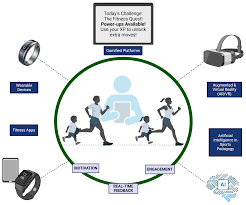In contemporary education, the teacher serves as more than just an instructor—they become media guides, helping students navigate the vast landscape of content available to them. With the proliferation of kids animated shows across numerous platforms, educators have an unprecedented opportunity to harness these engaging programs as springboards for deeper learning and critical thinking.
The modern teacher recognizes that kids animated shows are already a significant part of children’s lives outside the classroom. Rather than dismissing this media consumption as mere entertainment, effective educators bridge the gap between entertainment and education by helping students analyze, contextualize, and extend their viewing experiences into meaningful learning opportunities.
Creating Media-Savvy Students
Today’s children are growing up in a media-saturated environment where content is constantly available. Teachers play a crucial role in helping students develop the skills needed to become thoughtful media consumers rather than passive viewers. By discussing animated shows in an educational context, teachers can guide children to notice details about storytelling techniques, character development, and the messages being communicated.
This process of guided viewing and reflection helps students develop critical thinking skills that transfer to their independent media consumption. Children learn to ask important questions about what they watch: What is this show trying to teach me? How do the characters solve problems? What values are being promoted? These analytical skills become increasingly important as children navigate more complex media environments as they grow.
Selecting Quality Content
Not all animated shows offer equal educational value. Skilled educators help parents and students identify high-quality programming that supports developmental goals. The best educational animated content features age-appropriate pacing, diverse representation, positive social messages, and curriculum-relevant content presented in engaging ways.
Teachers can provide guidance to families about how to evaluate programming based on these criteria, empowering parents to make informed choices about their children’s viewing habits at home. By recommending shows that align with classroom learning objectives, teachers extend educational opportunities beyond school hours in ways that feel enjoyable rather than like additional homework.
Using Animation to Support Diverse Learners
One of the significant advantages of well-crafted animated content is its ability to support diverse learning needs. Visual learners benefit from the illustrative nature of animation, while auditory learners engage with dialogue and music. The combination of visual storytelling, verbal explanation, and emotional engagement creates multiple pathways for information processing.
Teachers who understand these benefits can strategically incorporate animated content to support students with different learning styles and needs. For students still developing language skills, including English language learners, the visual context provided by animation helps build comprehension. Meanwhile, social stories presented through animated characters can help students with social-emotional challenges understand nuanced interactions.
Promoting Cultural Awareness and Diversity
Modern educational animated shows increasingly feature diverse characters and cultural contexts, offering valuable opportunities for teachers to promote multicultural understanding and respect. When teachers deliberately select shows featuring various cultural perspectives and discuss these elements with students, they help children develop global awareness and appreciation for diversity.
These conversations extend naturally into broader discussions about representation and inclusion, helping students recognize the importance of seeing diverse experiences reflected in media. Teachers can guide children to notice whose stories are being told and whose perspectives might be missing, developing critical media literacy skills that will serve them throughout life.
Balancing Screen Time with Other Activities
While recognizing the educational potential of animated content, responsible teachers also emphasize the importance of balance. Screen-based learning should complement rather than replace hands-on experiences, physical activity, social interaction, and other essential components of childhood development.
Educators can model this balanced approach by using animated content as one tool within a diverse teaching repertoire. When screen-based learning leads to related non-screen activities—such as art projects, dramatic play, outdoor exploration, or scientific experiments—children experience a healthy integration of different learning modalities.
Conclusion
The relationship between education and entertainment need not be adversarial. Thoughtful teachers recognize that animated shows can serve as bridges to deeper learning when approached with intentionality and guided reflection. By helping children become active, critical viewers rather than passive consumers, educators transform entertainment into valuable educational experiences.
As media continues to evolve and expand its reach into children’s lives, the role of teachers as media literacy guides becomes increasingly vital. By embracing rather than dismissing children’s interest in animated content, educators meet students where they are and guide them toward becoming thoughtful, discerning media consumers with the skills to navigate our complex information environment.

